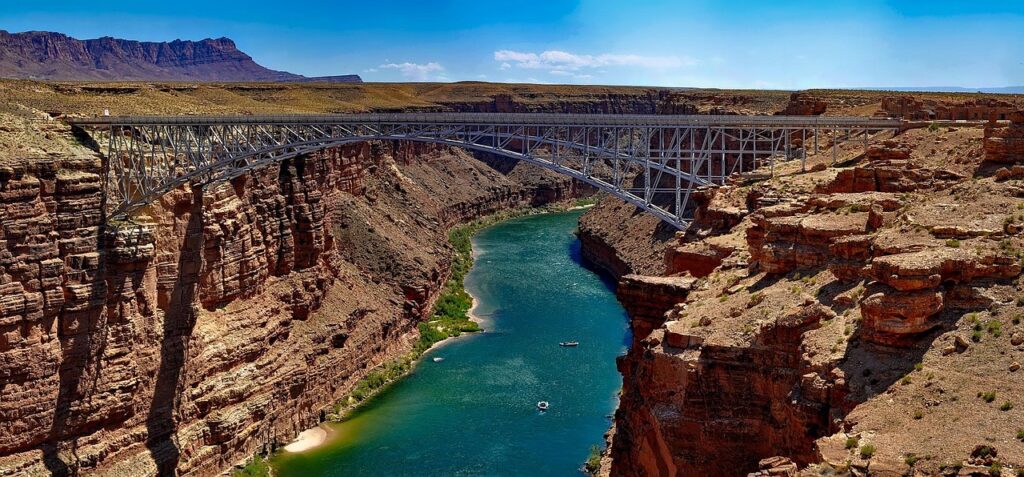The Colorado River Treaty establishes cooperation between Mexico and the United States on water and drought management.
The United States continues to meet its annual Colorado River water delivery requirements to Mexico under the 1944 U.S.-Mexico Water Treaty.
Colorado River Treaty
The Colorado River flows through seven states in the United States before reaching Mexico. Ninety-seven percent of its watershed is in U.S. territory.
Under the 1944 Water Treaty, the United States must deliver 1.5 million acre-feet of water per year to Mexico. This amount is equivalent to 10% of the average flow of the Colorado River.
The International Boundary and Water Commission (IBWC) plays a key role in enforcing this treaty. It oversees deliveries and manages the shared water infrastructure.
In recent years, the CILA has focused its efforts on improving water management and river infrastructure. This aims to ensure the availability of the resource during droughts. It also aims to restore and protect riparian ecosystems.
This approach is key. The Colorado River basin supplies water to more than 40 million people. It also irrigates nearly 5.5 million acres of agricultural land in the southwestern United States and northern Mexico.
However, the impact of more than two decades of drought is evident. Reservoirs such as Lake Mead and Lake Powell have fallen below 50% of their capacity.
The Colorado River basin covers a vast area. It extends over 246,000 square miles in the United States and Mexico. In the United States, it includes the states of Wyoming, Colorado, Utah, New Mexico, Arizona, Nevada, and California.
The Bureau of Reclamation, under the Department of the Interior, administers much of the water supply. This agency operates under federal law.
The river’s water has multiple uses. It is essential for agricultural irrigation, municipal and industrial services. In addition, it is needed for hydroelectric generation, fishing, wildlife conservation, and recreational activities.
Minute 323
Minute 323 is the most recent agreement regulating operations in the Colorado River Basin. It was signed in September 2017 by Mexico and the United States.
This binational agreement establishes a cooperative framework for water management in the basin. It includes measures such as the use of environmental flows to restore riparian habitat.
In addition, Minute 323 allows Mexico to defer its water deliveries from the United States. Those delayed deliveries can be stored in Lake Mead. This helps raise the lake level, which helps stabilize the water system.
The U.S. Congress could play a key role in the future of the agreement. Act 323 expires in 2026, so negotiations will be necessary for its extension or a new agreement to replace it.
This process will be part of a broader environmental assessment. This assessment will define how the Colorado River system will operate after 2026. It will include reservoir management and conservation measures. The goal is to ensure a sustainable water supply for both nations, especially in the face of prolonged drought conditions.

